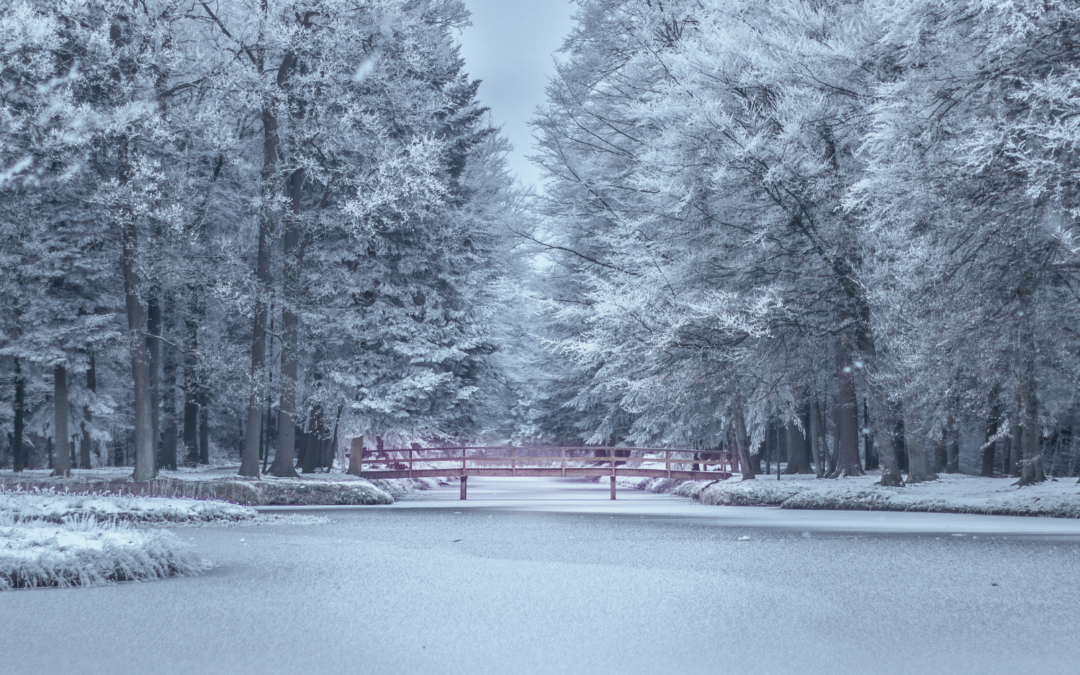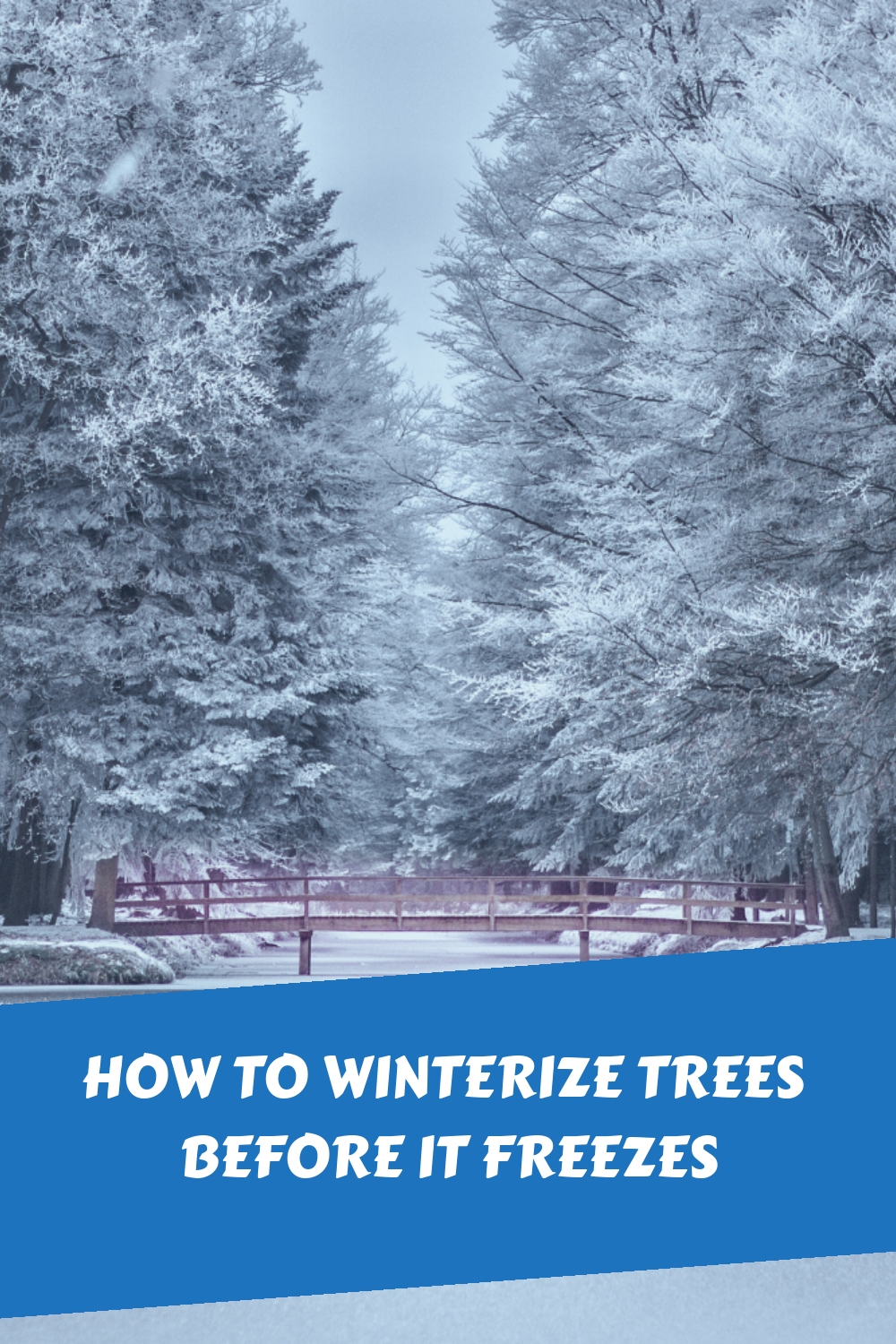Young trees can have a hard time of it in winter. Sensitive saplings shudder at the touch of Canadian winters. Older trees creak and shed branches in winter storms, and sometimes snap off completely under the weight of winter ice and winter snow. Their bark becomes deer and mouse food after the snow falls. Fortunately, there are many things you can do to winterize your trees and give them an edge against the worst that winter can throw at them.
Contents
Before the freeze
Drink up!
The first thing you have to do to winterize your trees is to make sure they get a good, long drink of water before the ground freezes and the sap shuts down. That’s especially important in a drought year or if the fall’s been very dry.
Usually, the fall rains should bring enough water. However, if the rain isn’t cooperating, make sure each of your trees gets a large bucketful of water each week until the ground goes hard. If you’ve had a dry summer, you’ve been doing this all along anyway, so just keep on doing what you were doing.
There’s one exception, and that’s if you’ve just planted a bare twig in the fall. Don’t water it before winter! It needs to grow its first leaf first. Otherwise, you’re waking up the tree just on time to be slammed by winter. Protect it from mice and deer, but let it stay dormant through the winter. When the spring rains melt the earth, you’ll have your first leaves.
Add mulch
Mulch your saplings. Don’t bury them, but make the mulch nice and deep. Mulch will hold in your water and give some insulation to your sapling’s roots. Use an organic mulch for this, like shredded bark or the leaves you just finished raking. They’ll even give off a bit of heat as they decompose, which protects the tree against the early frosts before you’ve got a blanket of snow.
If you’ve got a grown tree, you can rake those leaves to its foot and spread them around about as far out as the branches go. Why waste this perfect natural fertilizer? Your tree roots are going to love it!
Deter those mice!
There’s one more thing you’ve got to do for your saplings. You have to protect them from mice. If you get decent snow cover, mice running around under the snow think of their bark as a perfect winter snack. If they chew a whole ring around the bark, you’ve now got a dead sapling on your hands.
Special plastic trunk protectors can be found at most gardening centers. You can also make your own. They’re basically just a tube of thin, stiff plastic, cut diagonally lengthwise so they can be unwound and then snapped into place around the trunk.
Burlap or cardboard won’t work for this. The mice chew right through it! Painting the trunk with a tar-based substance is supposed to make the bark taste too bad to eat, but a hungry mouse will eat right through those sections.
First frost
Trim it down!
Late fall is one of the two major pruning seasons. The fall pruning cuts back dead and outlying branches, so they won’t fall on your house during a major winter storm. Leave all other live branches alone unless they’re a danger to your house.
Cutting back the overgrowth also cuts back on the exposure of outlying branches to ice, snow and wind. That cuts back on the odds of the wind uprooting your tree. Branches that don’t stick out aren’t exposed to the full wind chill, so fall pruning also promotes good branch and leaf growth in the spring.
If a branch does snap in the wind, cut off the part of branch close to the nearest fork above it. Pull it down first if it does not snap off completely. The point is to replace the torn area with a clean cut.
Skip the burlap
Trees that are rated for your plant zone don’t need it. Don’t plant trees that aren’t rated for your area. The tree will die and you’ll be unhappy.
It’s beginning to look a lot like Christmas
Road salt does really nasty things to trees. Road plows are going to keep shoving that road salt to where your lawn and garden meets the road. There’s not a lot you can do about that. However, if you’re going to have a tree on the front lawn, try to make it a species that’s more salt-resistant.
You’ve also got a personal role in cutting back on salt. Don’t use salt in your driveway. (Salt doesn’t work at really cold temperatures anyway.) With regular shoveling, you won’t get ice buildup in the first place unless there’s an ice storm. For that, use sand. Plain old gritty sand will give you all the traction you need.



